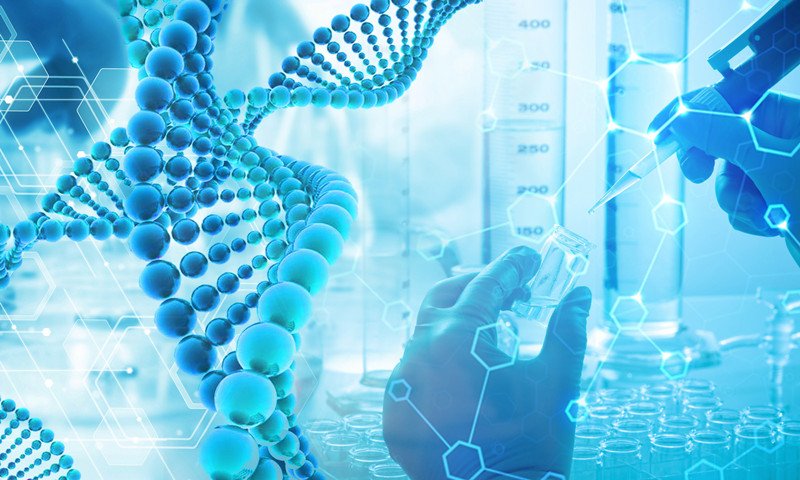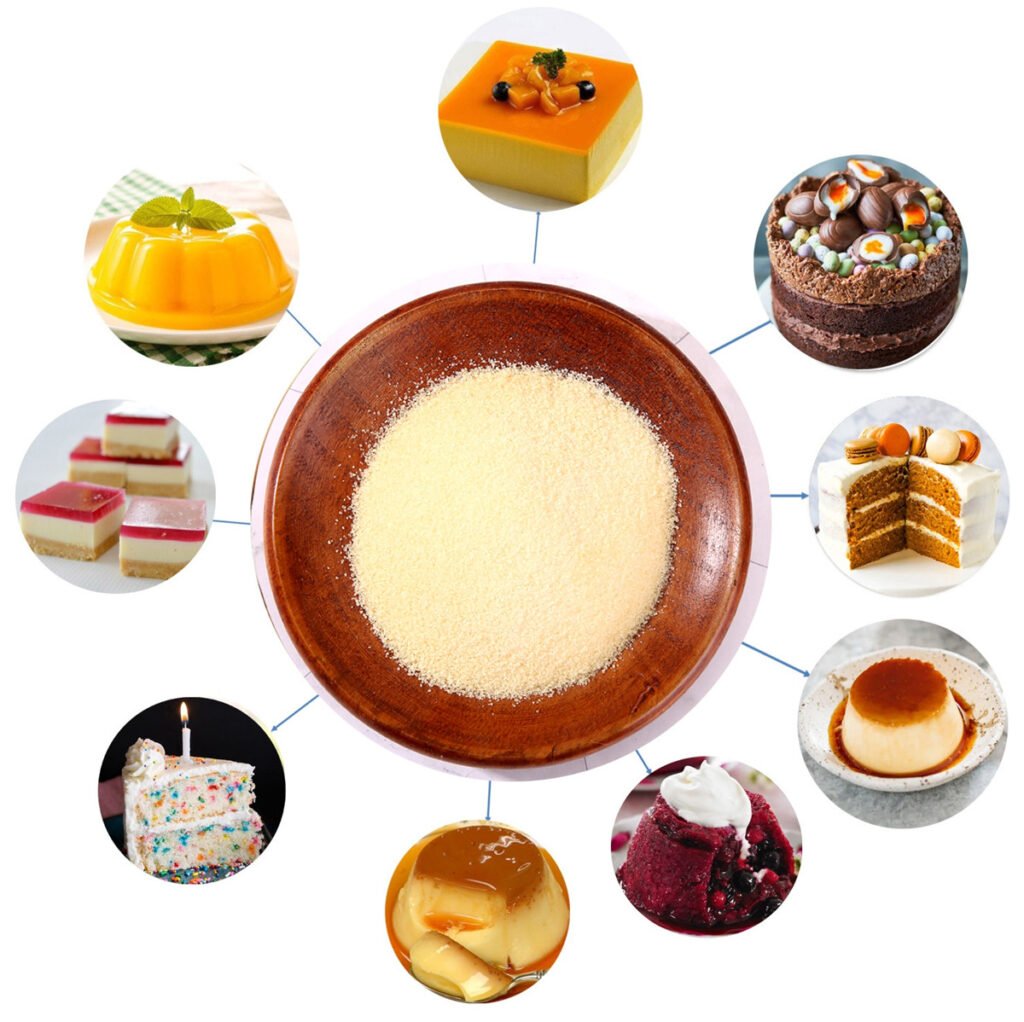Abstract: This article gives a general overview of collagen, which introduces the classification, amino acid composition, physical and chemical properties, extraction methods, and applications of collagen.
The English scientific name of collagen is Collagen, which is derived from the Greek word, meaning “the product of the formation of glue”. Collagen is white or slightly yellow and opaque. It is widely found in the skin, bones, teeth, ligaments, and blood vessels of animals, and plays the role of supporting organs and protecting the body. Collagen has gradually become one of the most critical raw materials in the biotechnology industry, and the demand is huge.
1 Collagen amino acid composition
The main constituent amino acids of collagen are proline, glycine, and alanine. Glycine accounts for almost one-third of the total amino acid residues, that is, there is one glycine every two other amino acid residues (X, Y). Collagen contains more hydroxyproline and hydroxylysine residues that are rare in other proteins. The content of proline and 4-Hyp is as high as 15%-30%, and it also contains a small amount 3-Hyp and 5-Hyl. Hydroxyproline residues can stabilize collagen molecules by forming intramolecular hydrogen bonds. Collagen lacks tryptophan, so it is a nutritionally incomplete protein.
2 Collagen classification
Collagen is widely distributed in animal bodies, widely found in connective tissues, skin, bones, internal organs, etc., only connective tissues account for about 20%-30% of collagen. So far, 42 collagen polypeptide chains encoded by 41 genes have been identified, constituting 27 different collagen types.

3 Physical and chemical properties of collagen
3.1 The viscosity of collagen
The aqueous solution of collagen has a certain viscosity. According to many studies, the viscosity of collagen is fundamentally affected by different raw materials. Temperature, changes in an electrolyte in solution, deviation of isoelectric point, and foreign ions will all cause viscosity changes.
3.2 Coagulation strength of collagen
Gelability refers to the ability of protein products to form gels under certain conditions. Gel strength is one of the important indicators to measure the strength of collagen gel.
3.3 Thermal denaturation of collagen
The thermal denaturation of collagen refers to the phenomenon that the specific spatial conformation of collagen is changed under the action of heat, which leads to the change of its physical and chemical properties and the loss of biological activity. The thermal stability of collagen is positively correlated with the content of hydroxyproline.
3.4 Emulsifying properties of collagen
Emulsification refers to the ability of protein products to combine oil and water to form an emulsion. There are many factors that affect the emulsification of protein products, such as particle size, pH of the solution, processing method, temperature, and protein concentration.

4 Extraction method of collagen
4.1 Hot water extraction method
After the raw materials are pre-treated, they are leached with hot water under certain conditions to obtain water-soluble collagen. The temperature used is 100°C, 60-70°C, 40-42°C, 45°C. The collagen extracted by hot water has higher water retention, emulsification ability, emulsification stability, and foam stability. At present, it is difficult to quantify the specificity of collagen, so the total protein measurement method or the total nitrogen measurement method is usually used.
4.2 Acid extraction method
The acid extraction method is to extract collagen under certain acidic conditions. The acids used are formic acid, acetic acid, hydrochloric acid, lactic acid, malic acid, tartaric acid, and citric acid. In the production of food-grade collagen, citric acid is generally used to achieve the purpose of decalcification. The change of fiber swelling ability caused by the acid extraction method is an important factor that affects the difficulty of collagen extraction.
4.3 Alkaline extraction method
Alkaline extraction method is to use alkali to dissolve the pretreated material, usually sodium hydroxide, sodium carbonate, calcium hydroxide, etc., and use alkali to extract collagen under certain conditions.
4.4 Enzyme extraction method
Enzyme extraction method refers to the method of using various enzymes to extract collagen under certain external environmental conditions, including single enzyme extraction and multiple enzyme mixed extraction methods. Among them, the multiple enzyme mixed extraction method is the current research Hot spots, commonly used enzymes are pepsin, trypsin, papain, ficin, bromelain, chymotrypsin, neutral protease, alkaline protease, etc. Enzyme extraction is the most extensive method for extracting collagen at present. It has the characteristics of fast response, short time, high purity of the obtained collagen, stable physical and chemical properties, and environmental friendliness.
5 Application of collagen
Collagen has rich nutrition, special physiological and biochemical properties, and has higher biocompatibility and biodegradability than synthetic polymer materials, so it is widely used in food, health products, cosmetics, medical materials and chemical industry.

5.1 Food ingredients
As a food additive, it is mainly used in food based on its excellent physical and chemical properties, that is, functional properties. It is usually included food emulsifiers, stabilizers, clarifiers, thickeners, emulsifiers, etc. To reduce pollution, people have been studying degradable and usable food packaging materials. Collagen has a certain viscosity and toughness. As an edible protein packaging film, it has good tensile strength, heat sealability, and high gas barrier, oil barrier, and moisture barrier functions.
Common packaging materials made of collagen include artificial casings, packaging films, and coating materials. The gel properties of collagen and its hydrolysate (gelatin) are used to make new artificial foods, and foods close to traditional products are formed by adding food additives to them.
5.2 Health products
For special populations, collagen can improve gynecological diseases caused by endocrine disorders, especially menopausal women who need collagen to supply the body’s needs. As a calcium-supplementing food, collagen can be used as a calcium-supplementing ingredient in health foods, because hydroxyproline from collagen in plasma is a vehicle for transporting calcium in plasma to bone cells. The principle of bone glue in bone cells is hydroxyl. A compound of apatite, which together with hydroxyapatite constitutes the main body of the bone. Used in beauty foods, collagen is an important component of human skin and has a unique network structure, which can improve the skin structure and make the skin more elastic and firm. It can prevent cardiovascular disease. Collagen can reduce blood triglyceride and cholesterol content, and can increase certain essential trace elements that are lacking in the body so that it can be maintained within a relatively normal range. It is an ideal weight loss. Lipid-lowering food.
5.3 Cosmetic ingredients
Because collagen has good nutrition, repair, moisturizing, compatibility, and affinity, it has whitening, moisturizing, anti-wrinkle, repair, nutrition, weight loss, and other beauty and body effects. Therefore, collagen has developed rapidly in the application field of cosmetics.
5.4 Medical material
Collagen is the structural protein of the extracellular matrix. Because of its special 3-strand helical structure and its cross-linked structure, it has many advantages in medicine, such as high hydrophilicity, non-toxicity, biocompatibility in vivo, and degradability. These advantages make collagen have a variety of applications in biomedicine.
5.5 Chemical raw material
Collagen and plant fibers are made into composite materials, which can be used to make paper leather, film packaging materials, wallpaper, diaper paper, high-grade household paper, brake pads, porous absorbent materials, recycled leather, shading paper, agricultural and sideline product packaging materials, bio-collagen wrapping paper, women’s sanitary napkins, composite biodegradable materials, etc.

